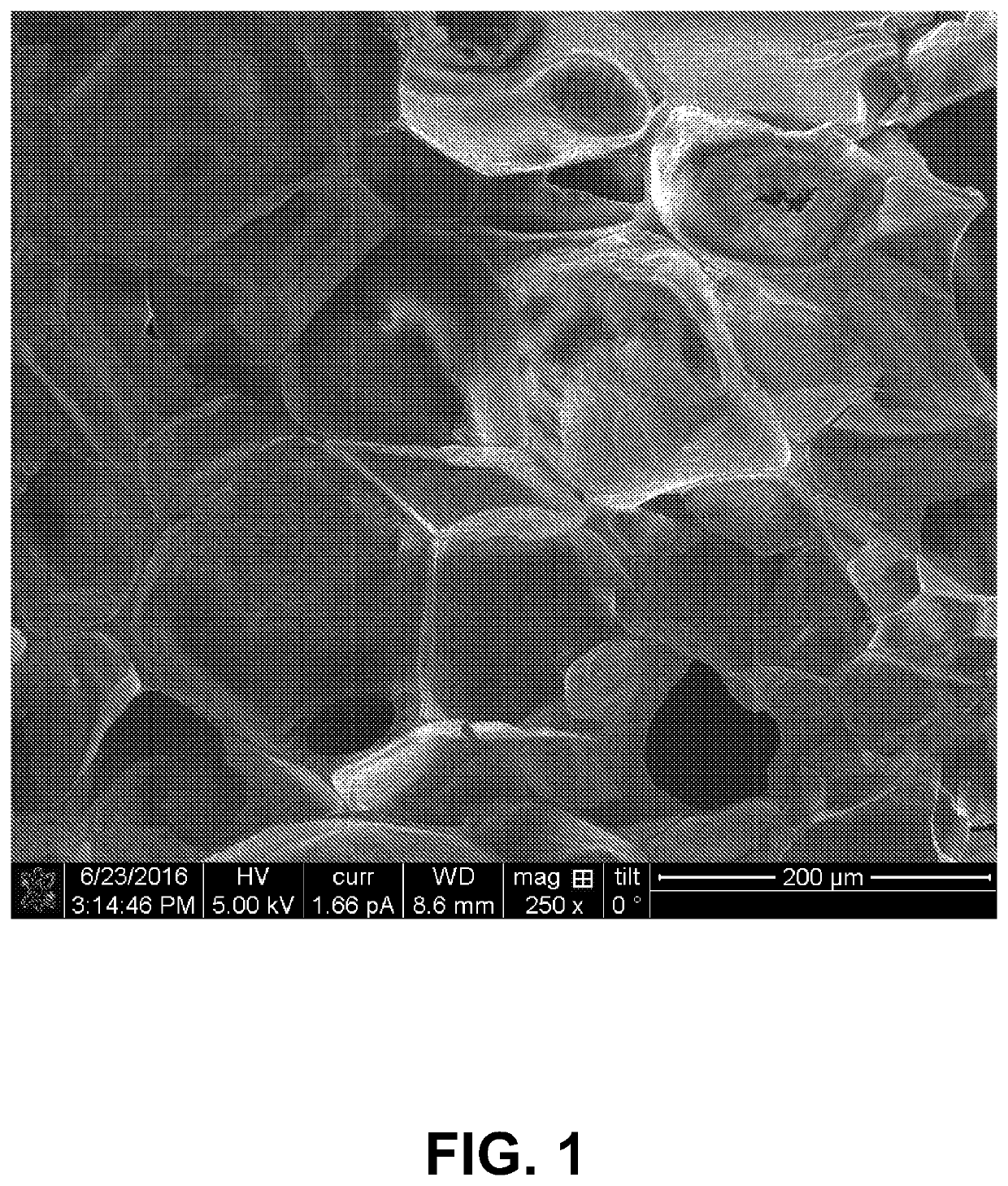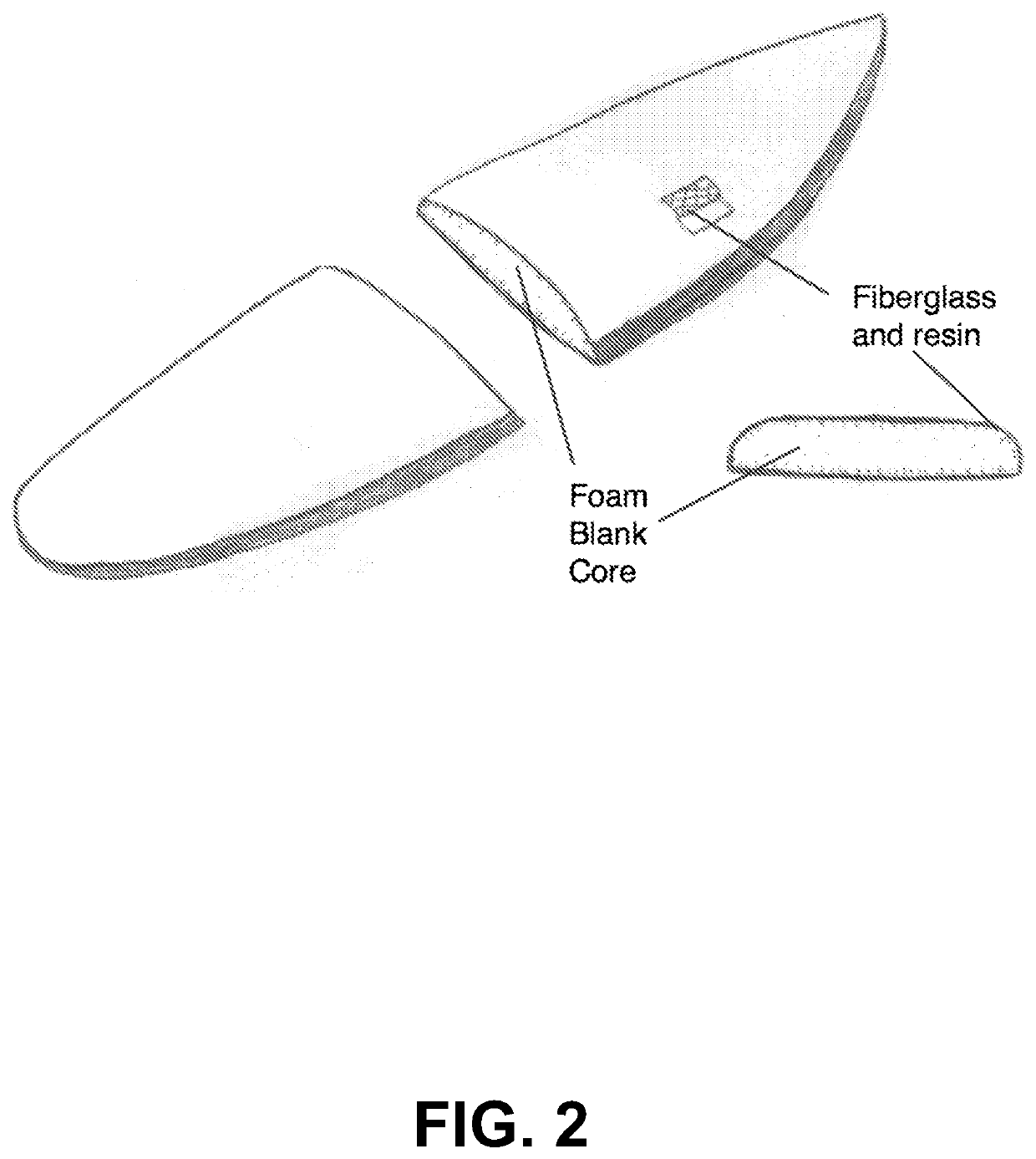Naturally Sourced Chitin Foam
a technology of chitin foam and closed cell, which is applied in the field of closed cell dry foam, can solve the problems of not providing structural characteristics of the foam, and achieve the effects of strong mechanical properties, superior mechanical properties, and abundant and cheap
- Summary
- Abstract
- Description
- Claims
- Application Information
AI Technical Summary
Benefits of technology
Problems solved by technology
Method used
Image
Examples
example 1
[0038]A first embodiment is a closed pore foam that is made essentially of chitin. Using chitin that crystallizes into the alpha form after the processing does not need the use of a cross linker to yield a closed cell-rigid foam.
[0039]The foam does not absorb water and it is not wettable. This is obtained by using chitin with >90% degree of acetylation. The >90% degree of acetylation makes the chitin challenging to dissolve to make the foam, but yields assembly of chitin into crystalline alpha chitin. Alpha chitin is not soluble in water, does not absorb water, and the increased hydrogen bonding in alpha chitin yields to better mechanical properties compared to composite foams, or foams made of chitosan.
[0040]By exploiting the assembly of chitin, mechanical agitation is sufficient to trap the gas bubbles in the foam, which solidifies when water evaporates giving yield to a solid structure. This technique creates a foam consisting essentially of chitin by dissolving chitin in water, ...
example 2
[0042]This is but one example of producing chitin foam according to the invention. A solution of 8% by weight sodium hydroxide (NaOH) and 4% by weight urea are dissolved in deionized water. After dissolving the NaOH and urea, the solution is cooled to around 5 degrees Celsius. The NaOH / urea solution is removed from cooling and 2% by weight beta chitin is added. The chitin is stirred into the solution and is then incubated at −20 degrees Celsius for 24 to 48 hours. Over the 24 to 48 hours the NaOH / urea / chitin solution is removed and allowed to thaw to a temperature of 0-5 degrees Celsius, at which point the mixture forms a viscous gel. The gel is stirred again incubated at −20 degrees Celsius. After one, two or more cycles of the freeze / thaw / stir cycles described above, the solution is again allowed to thaw to around 0-5 degrees Celsius. A surfactant, stabilizer, and / or cross-linker is added to the solution. In some examples, the amount of surfactant added can be between 0.02% by wei...
PUM
| Property | Measurement | Unit |
|---|---|---|
| tensile strength | aaaaa | aaaaa |
| elastic modulus | aaaaa | aaaaa |
| pore sizes | aaaaa | aaaaa |
Abstract
Description
Claims
Application Information
 Login to View More
Login to View More - R&D
- Intellectual Property
- Life Sciences
- Materials
- Tech Scout
- Unparalleled Data Quality
- Higher Quality Content
- 60% Fewer Hallucinations
Browse by: Latest US Patents, China's latest patents, Technical Efficacy Thesaurus, Application Domain, Technology Topic, Popular Technical Reports.
© 2025 PatSnap. All rights reserved.Legal|Privacy policy|Modern Slavery Act Transparency Statement|Sitemap|About US| Contact US: help@patsnap.com


